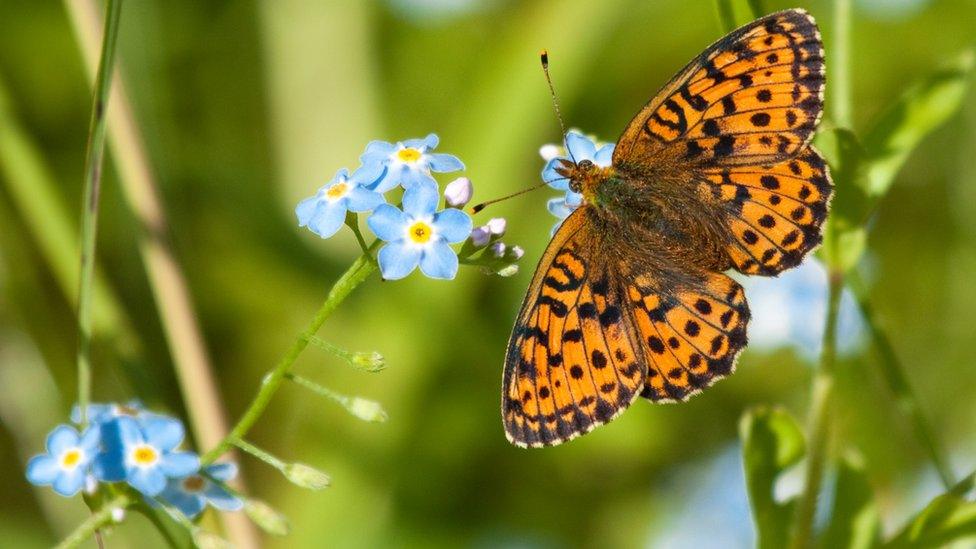UK wildlife: 2020 a 'good year' for butterflies but conservationists are worried
- Published
- comments

A warm, sunny spring, meant that last year was a good year for UK butterflies, experts have said.
Results from the annual UK Butterfly Monitoring Scheme (UKBMS) showed 2020 was the third good year in a row for British butterflies, and was the 10th best year on average across all species since the scheme began in 1976.
However almost half the UK's butterfly species monitored - 27 out of the 58 - recorded below-average numbers last year.
Why are some butterfly numbers up?
In 2020 the most significant weather impact was the very warm, sunny spring, which "was fantastic for butterflies", according to Dr Richard Fox, from Butterfly Conservation.Populations of many rarer species of butterfly have benefited from conservation action by wildlife groups and landowners, and scarce species such as the large blue, silver-spotted skipper and Duke of Burgundy had some of their best years in the survey.
But populations of many widespread and common species are down since the survey began in 1976. Dr Fox said the numbers were almost certainly declining before that, so even a "good year" results in lower numbers than in the past.
Common species, brimstone, orange-tip and marbled white all did well, although their numbers were not at the exceptional levels seen the previous year.
The small tortoiseshell's numbers had increased compared to 2019 after a run of four bad years, but they were still below long-term averages and have seen a 76% decline since 1976.
The small pearl-bordered fritillary had its third worst year on record in 2020, and populations have declined by 68% since 1976.
While wall, grayling and small skipper butterflies all remained at a low level.
'Forgetting' past wildlife
Scientists say this shows that because we have become used to long-term declines of wildlife, our view of what is "good" is shifting.
This happens because people forget, or have never experienced, the large amount of wildlife found in the UK in the past and lower their expectations for how it can be restored.
Dr Richard Fox, said: "There are just fewer and fewer butterflies out there. There are some species doing well and bucking the trend, but in general there are far fewer butterflies out there.
"If we think that achieving the number of butterflies in our garden, on our farm, in our local county or across the UK as a whole, that 2020 is a great level to be at, then we are forgetting what's been lost."
The butterfly monitoring scheme shows that just under a third (31%) of butterfly species assessed in the UK show long-term declines.
Long-term declines are mainly driven by human activity, particularly the loss of habitat and climate change.
From a year-to-year basis butterfly numbers are mainly affected by the weather.
What can be done?
Dr Fox said everyone can do their bit to turn around the declines of common butterflies.
"What we really need is more wild areas, a bit of wildness in your garden, a bit of wildness in the local park or cemetery, a bit of wildness around farm fields.
"That done on a huge scale can only help - it provides breeding habitats, and this is what butterflies need," he said.
He said that this could be as simple as allowing grass to get long or leaving a patch of nettles to grow.
- Published30 March 2021
- Published20 January 2021
- Published23 March 2020
